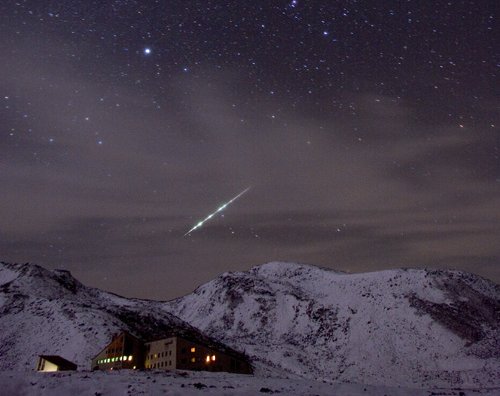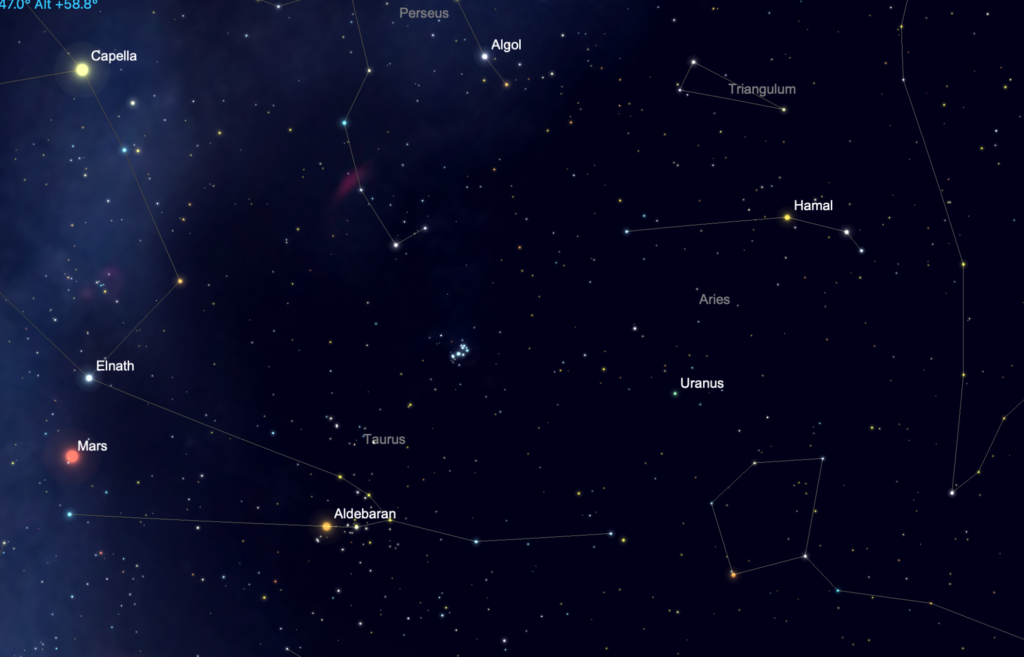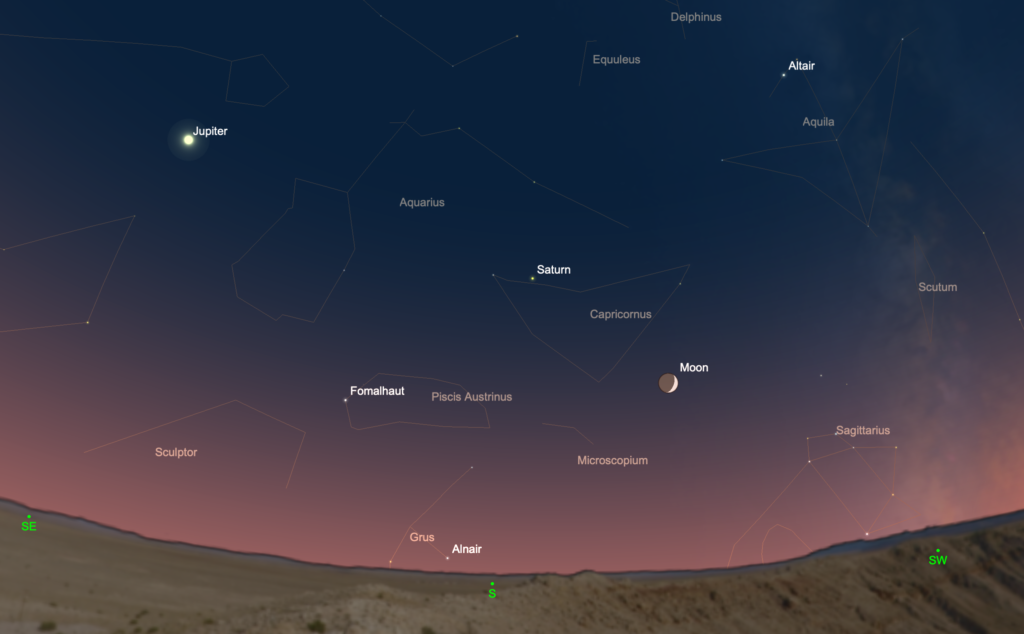
As November arrives, northern stargazers enjoy earlier sunsets and longer and colder stargazing sessions, while southern-hemisphere stargazers now enjoy the warmer nights of spring. For deep-sky observers, there are plenty of open star clusters in Cassiopeia and Perseus, and lots of galaxies in Pegasus, Sculptor, and elsewhere. Orion rises well into the evening and dominates the southern sky after midnight, while the stars of northern spring rise before dawn. The bright planets Jupiter, and Saturn are past their prime for the year but still present well in a telescope, while continuing to brighten on the way to opposition next month. And the Leonid meteor shower, quiet for the past many years, may offer a spectacular outburst on or about the 18th. Here’s what to see in the night sky this month.
1 November 2022. First Quarter Moon, 06:37 UTC
2 Nov. The waxing gibbous Moon lies roughly half way between Saturn (to the west) and brighter Jupiter (to the east). Both planets, though past opposition, still offer a wealth of detail to telescopic observers on nights of steady seeing. As the month begins, Jupiter still spans about 48” and shines at an impressive magnitude -2.8, more than three and a half times as bright as Sirius, the brightest star.
6 Nov. Most of North America sets the clocks back to Standard Time – which means you get to enjoy an extra hour of stargazing.

6-12 Nov. The Taurid meteor showers peak this week in less than ideal ‘moony’ conditions. There are two, the Northern and Southern Taurids, and they both peak in late October through mid-November. They’re sometimes called the Halloween Fireballs. You can see these bright, slow-moving fireballs in the northern and southern hemispheres at essentially any time of night. This event usually shows 5-10 meteors an hour, although some predictions suggest more plentiful meteors this year.
8 Nov. Full Moon, 11:02 UTC (The ‘Beaver Moon’)

8 Nov. A total lunar eclipse arrives with the November full ‘Beaver Moon’ for observers in the Americas and the Pacific (including Australia and New Zealand). The eclipse occurs with the Moon near apogee, so it appears a little smaller than average. Look for it in Aries about 16 degrees west of the Pleiades. The eclipse happens from 8:02 UTC to 13:56 UTC on November 8, with totality running 86 minutes from 10:16 UTC to 11:42 UTC. Peak eclipse arrives at 10:59 UTC. During this eclipse, the Moon lies at the northern edge of the umbra, the darkest part of the Earth’s shadow, so it appears slightly brighter at its northern limb and darker towards its southern limb. The good folks at timeanddate.com have more details and location timing.

9 Nov. Uranus reaches opposition as it rises in the east as the Sun sets in the west. This distant ice giant lies just at the edge of naked-eye visibility at magnitude +5.7 with a disk that spans about 3.7 arc-seconds. You can see it about five degrees south of the 5th-magnitude star epsilon Arietis. Uranus remains visible through the end of 2022 and into the new year in this part of the sky. If you have dark sky, try to see the planet without optics. Although the planet was plainly, though not easily, visible to pre-telescopic stargazers, it wasn’t ‘discovered’ until William Herschel found it with a 6” telescope on March 13, 1781. For an even bigger challenge – try to find some or all of the bright Moons of Uranus with the help of this handy-dandy moon finder at Sky&Telescope.
An even bigger challenge for telescopic observers – spotting one (or all) of the planet’s five brightest moons, all of which lie close to its disk and are somewhat overwhelmed by its glare.

11 Nov. The waning gibbous Moon lies less than 3o from brightening Mars in the horns of Taurus early this morning before dawn. The planet now brightens and grows larger each day on its way to opposition next month. Today the planet spans a respectable 16” and shines at magnitude -1.5, brighter than anything in the night sky except for the Sun and Moon.
16 Nov. Last Quarter Moon, 13:27 UTC
18-21 Nov. The Leonid meteor shower has been quiet these past many years. But things might pick up in 2022 as the Earth passes through three clumps of debris left by the parent comet of the Leonids, Comet 55/P Tempel-Tuttle. A peak of 15 meteors per hours is typical for the Leonids, but a burst of an additional 5 meteors per hour may arrive at 07:00 UTC on November 18, which favors western European and North American observers, and again at 15:00 UTC on November 21 which favors observers in the Pacific. Of most interest is a potential outburst of 200-300 meteors per hour (!) at 06:00 UTC on November 19. Nothing’s assured – but if your skies are clear, mark these times in your calendar. Leonids can appear anywhere in the sky but appear to trace their paths back to a radiant in the ‘Sickle’ of Leo.
21 Nov. If you’re up early, look eastward to see a slender crescent Moon about 5o east of the 1st magnitude star Spica. Brighter Arcturus lies well to the north.

23 Nov. New Moon, 22:57 UTC
27 Nov. A waxing crescent Moon returns to the western sky after sunset with Saturn and Jupiter well to the east, both planets slowly working their way to conjunction with the Sun.